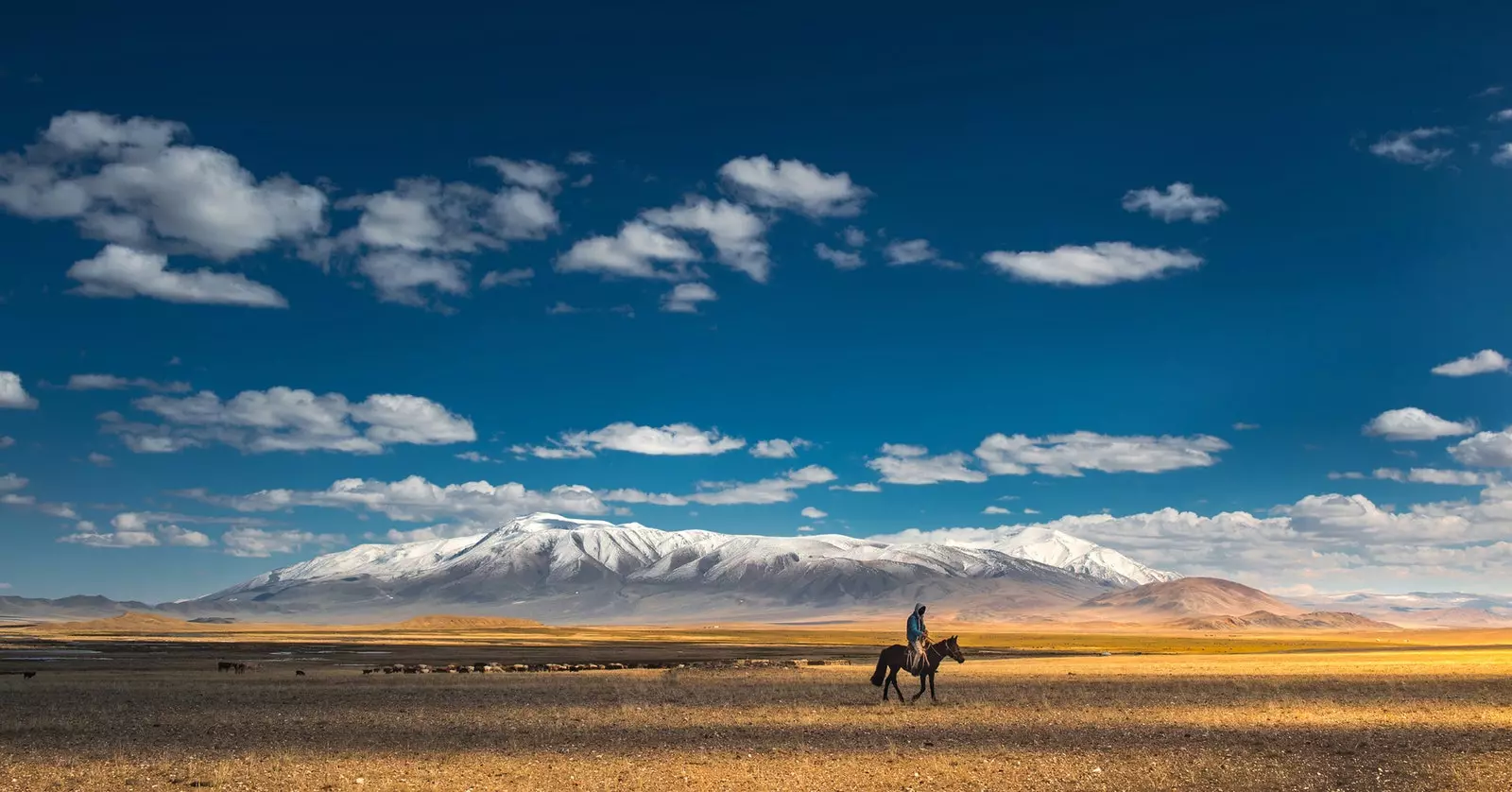
Mongolia at its finest
Although only 585 kilometers separate Ulan-Ude from Ulan Bator , the train journey can take up to 20 hours. The reason: the exhaustive border controls. There, between the two countries, the atmosphere is sensed tense . Passengers and crew exchange smiles for nervousness. Curtains, windows and bathroom doors are closed. Without moving from our cabin, Russian policemen first and Mongolians later ; they examine passports, luggage and impossible hiding places for unseen stowaways. I take advantage of the hours without landscapes to read about Mongolia.
Mongolia is that little piece in the middle of Asia that remains of what was one of the greatest empires in history. The Mongol Empire was losing hegemony and, from the seventeenth century to 1921, also lost its independence . Currently, only the numerous monuments to Genghis Khan scattered throughout the country, leave evidence of the power that one day made them owners of the great whole of Asia and Russia.
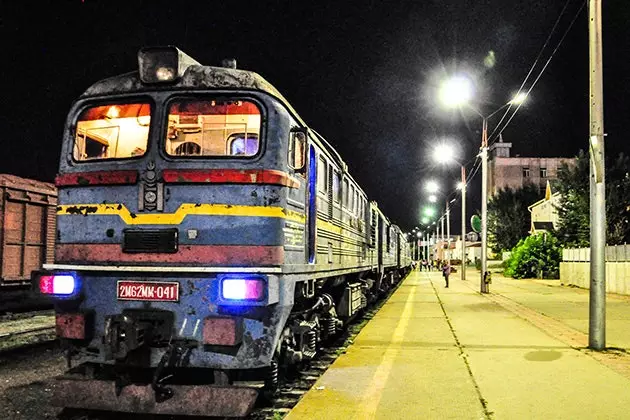
Train on the Russia-Mongolia border
We woke up very early at the station in the capital of Mongolia, the train has reached its destination . To fight against so much time change, we decided to wander around Ulaanbaatar. Soviet-style apartment blocks, old temples, modern high-rise buildings, brick houses and yurts ; model a messy city.
Avenida de la Paz is the main street of Ulaanbaatar that leads to its nerve center, the Plaza de Genghis Khan . In the middle, a statue dedicated to Damdin Süjbaatar, father of modern Mongolia, stars in the second name by which the square has also been known since 2013. Chinggis Khan Square or Sükhabaatar Square is used for rallies , ceremonies or concerts; but when there are none of these events, fills with bikes and electric toy cars that the government makes available to children. Just behind the statue of Sükhabataar, the Government House presides over the esplanade. Across the square, the Temple and Lama Choijin Museum , is superimposed on a modern glass tower.
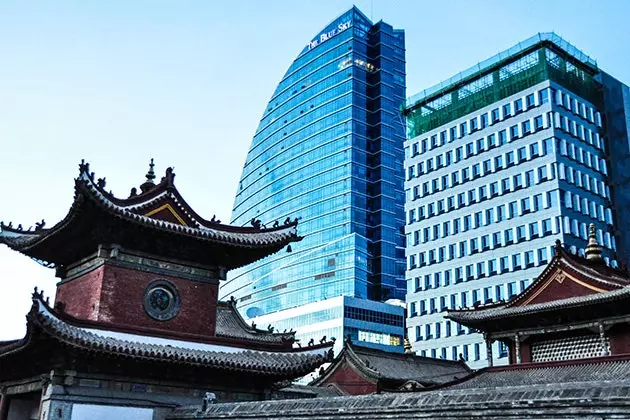
Lama Choijin Temple next to the modern buildings of the city
The city can be visited in one day: Winter Palace of the Bogd Khan, Mongolian National Museum, history Museum, Dinosaur Museum and, as it could not be less in an Asian capital, its Black Market.
The surroundings of the capital, on the other hand, require a little more time. Twenty minutes by car we find the zaisan monument , a tribute to the Soviet soldiers who died in World War II. The Mandshir Khiid Monastery , rebuilt in 1990, is located 50 kilometers from the capital and its visit is a good excursion to do in half a day. And a little further, about 80 kilometers away, is the Gorkhi-Terelj National Park , one of the essentials to immerse yourself in Mongolia for one or two days before touring the country in depth.
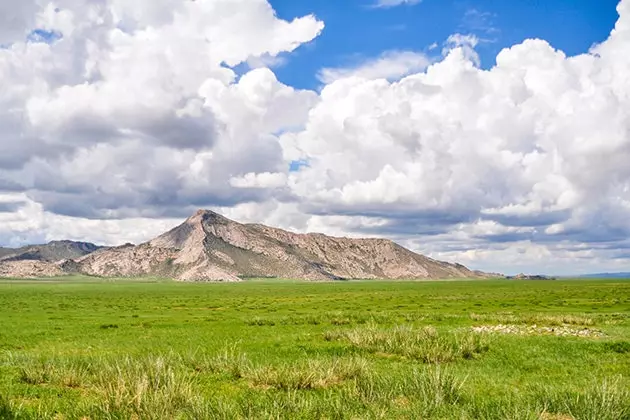
Landscape on the outskirts of Ulan Bator
In order to choose multi-day excursions around the country, you have to take into account the three geographical areas in which it is divided: the mountainous area of the northwest, in which the Altai massif stands out ; the central area known as Half Gobi with its lakes and the ruins of Karakorum (capital of the Mongol empire in the 13th century); and southern and eastern Mongolia invaded by the Gobi desert. We choose the south.
It is 8:00 in the morning on a rainy Tuesday in August. We rode in a Russian van of the style that they took us around lake baikal and we know who will be our travel companions for the next week: a teacher from Terrassa and a German mother and daughter . Together with a guide and the driver, we enter unnoticed Mongolian paths. I lose my gaze in the constant landscape while I think of train trips, the intriguing awakenings and everything the Trans-Mongolian is teaching me . In seven days, they will only be a valuable memory fighting to beat the routine. Until then, let's enjoy the Gobi, last leg of the journey.
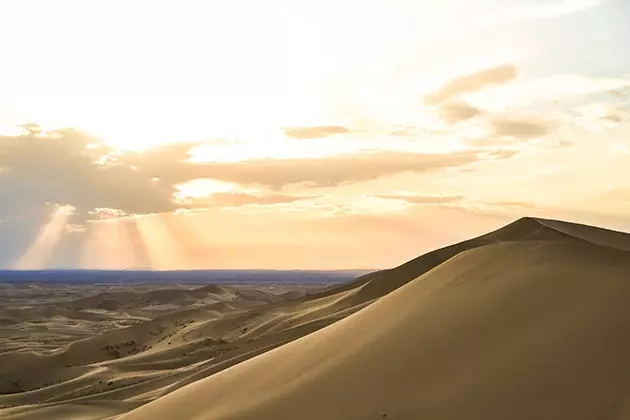
Dunes in the Gobi Desert
